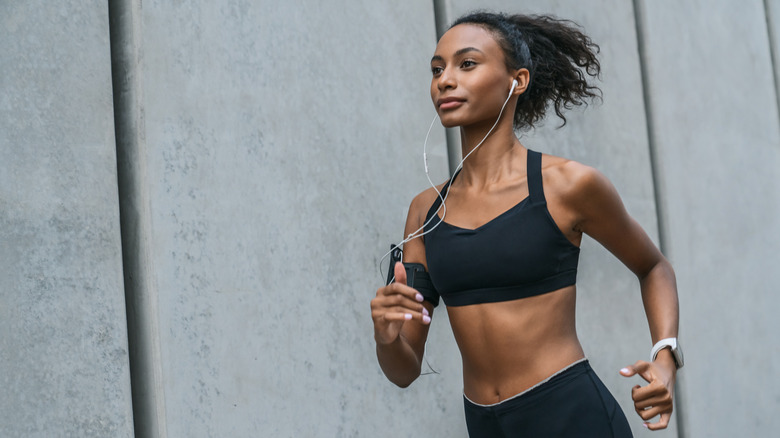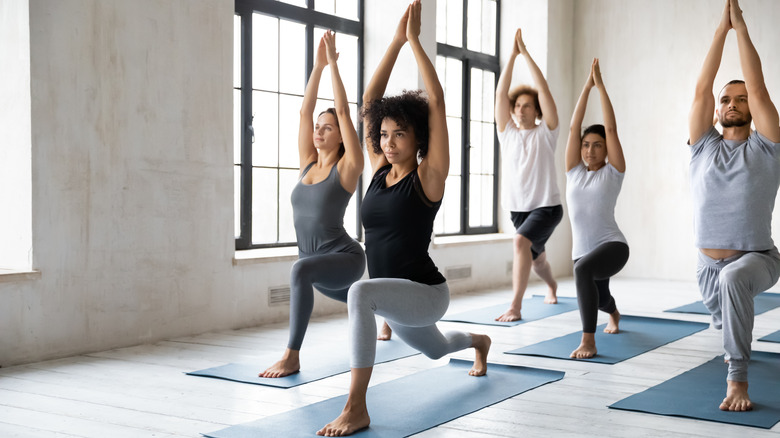The Negative Impact Running Has On Your Heart
When it comes to your heart health, both strength training and cardio exercise have been found to be beneficial. The American Heart Association (AHA) recommends getting at least 150 minutes of moderately-intense aerobic activity per week, a goal that can be achieved by going for a brisk walk or running several times a week. Some studies, however, suggest that running may not be as good for the heart as we may believe.
If you're a runner looking for a good reason to slow down your pace or cut your distance, this is it. A 2015 study published in the Journal of the American College of Cardiology found that running fast, long distances can do more harm than good. According to the study, people who run at a face pace for more than two and a half hours at least three days per week don't receive any extra health benefits in comparison to sedentary nonjoggers. In fact, runners who have a higher risk of battling heart disease are people who run marathons.
How yoga benefits your heart health
According to Prevention Magazine, you don't have to pound the pavement to boost heart health. Practicing yoga is less intense (not to be confused with easy) and benefits your heart in a powerful way. Because it's a calm practice, yoga can lower your blood pressure. With that said, if you have a busy or stressful life (even if it's the good kind), yoga can help you settle down from the pressures and demands you face every day. For that reason, Everyday Health says yoga can help minimize the risk of heart disease brought on by stress and even soothe an irregular heartbeat.
The University of Pittsburgh Medical Center identifies 10 yoga poses that are especially good for the heart and provide other benefits. For heart health plus increased flexibility, try the standing forward bend, extended triangle pose, bridge pose, chair pose, and head to knee pose. If you want to add relaxation and sleep benefits to your heart health goals, try the easy pose, supine spinal twist, child's pose, legs up the wall, and corpse pose.


